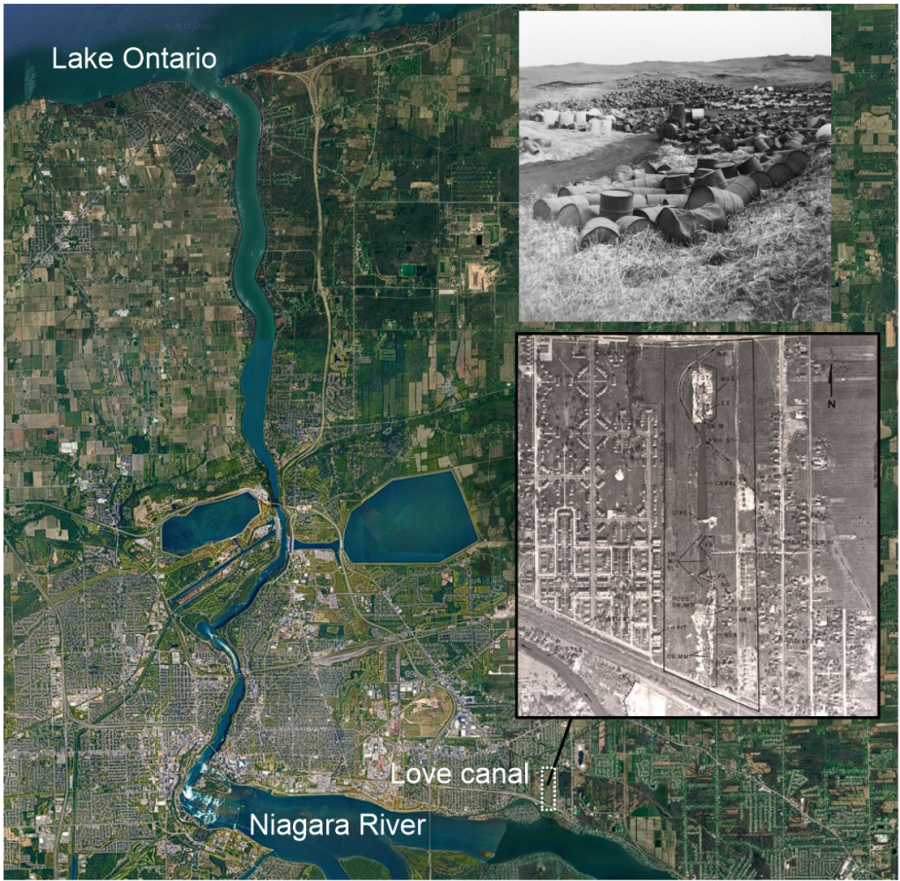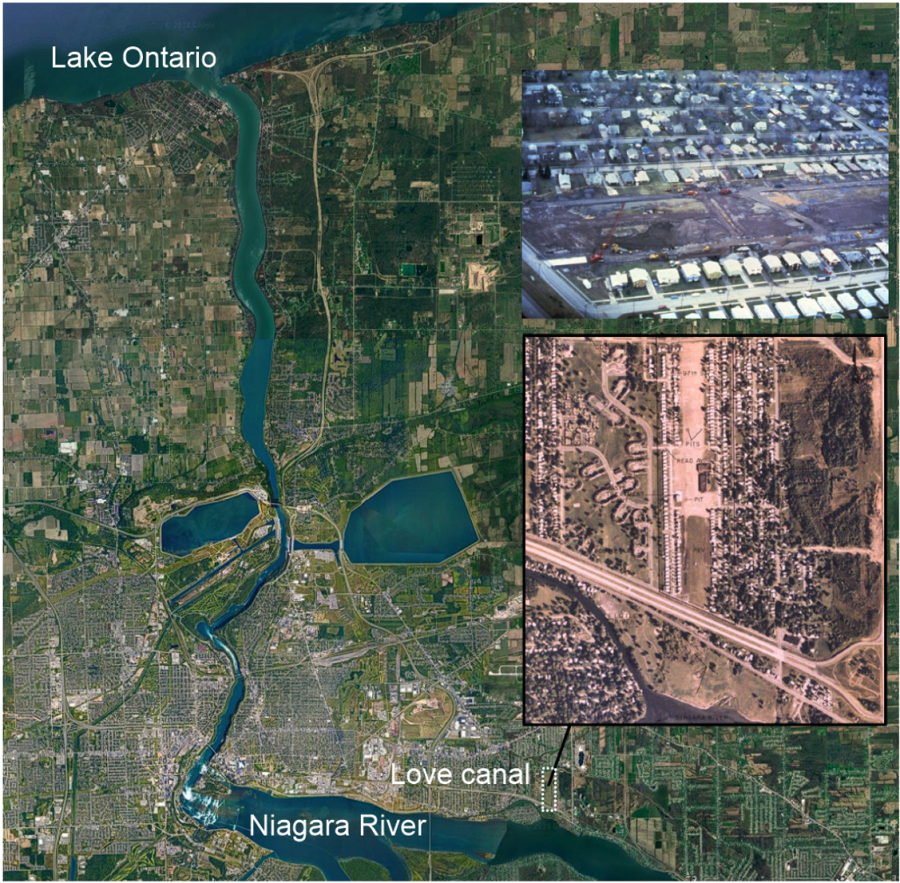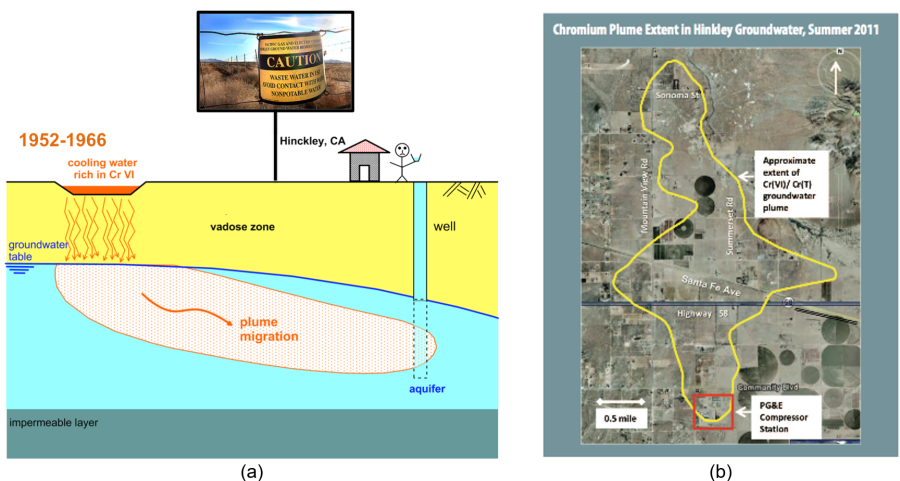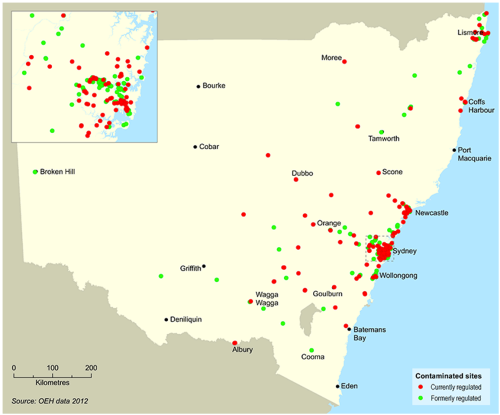2.2 Characteristic cases studies of soil and groundwater contamination
Discussion on the impact of civil engineering works on the geoenvironment began in the USA during the 1970’s, in the light of the development of nuclear power plants, and the need for deep underground storage of hazardous radioactive waste.
Perhaps the most characteristic case study of contamination of the subsoil, and its effects on the population of the area, is the Love Canal case in the USA, which lead to the development of geoenvironmental regulations for civil engineering works.
Love Canal was an attempt to create a navigation canal to connect Niagara River to Lake Ontario, near the area of the famous waterfalls (Figure 2.4). The project began in 1896, but it was abandoned for various reasons, leaving behind an incomplete 3000 m long canal. In 1942 a local chemical industry bought the canal to use it as a repository pit. Between 1947 to 1952, about 22,000 tons of solid and liquid toxic waste were deposited and buried in the canal (Figure 2.4). In 1953 the canal was backfilled and sold to the city of Niagara Falls for $1. The company included in the contract a term stating “the grantee assumes all risk and liability incident to the use thereof”. Nevertheless, until 1977 hundreds of houses and two schools were built in that area (Figure 2.5), despite the local population starting suffering from unexplained health issues.

A federal health emergency was declared in 1978, and the population was evacuated. The subsoil investigation that was conducted in the area revealed extremely high concentrations of toxic chemicals such as benzene and dioxin, and clinical studies results suggested that 33% of the local population had undergone chromosomal damage.
Restoration of the area (Figure 2.5) lasted about 20 years, and was completed only in 2004.

Another case study that attracted public attention is the Hinkley, CA groundwater contamination with hexavalent chromium (Cr(VI)). Pacific Gas & Electric Corporation operates a natural gas pipeline compressor station in the town of Hinkley, in California. Between 1952 and 1966, the water used to cool the compressors was deposited in unlined ponds near the station (Figure 2.6a) This cooling water, rich in toxic hexavalent chromium, infiltrated and polluted the groundwater, which was used by the population of Hinkley.

Severe health problems, including about 200 cancer cases were attributed to pollution of the groundwater with Cr(VI). A multimillion-dollar legal settlement was achieved between the Pacific Gas & Electric Corporation and the citizens of Hinkley. Several years after, the plume of contaminated water has started migrating to the lower aquifer (Aug. 2010) at a rate of 1 ft per day, almost 1 mile per year (Figure 2.6b).
In 2012, approximately 300 significantly contaminated sites (Figure 2.7) had been reported in NSW, and are regulated under the Contaminated Land Management Act 1997 (NSW State of Environment 2012-Land).

Key contaminating activities include:
- Service stations and other petroleum industrial sites (37%)
- Chemical industry sites (10%)
- Metal industry sites (7%)
- Other industrial sites (16%)
- Former gasworks sites (12%)
- Landfill sites (9%)
Over the past years several large remediation projects have been completed in NSW, including the Rhodes Peninsula in Sydney and BHP Billiton’s Hunter River remediation, the largest (to that date) sediment remediation project, which included cleaning up contaminated river sediments affected by operations of the former Newcastle steelworks.

